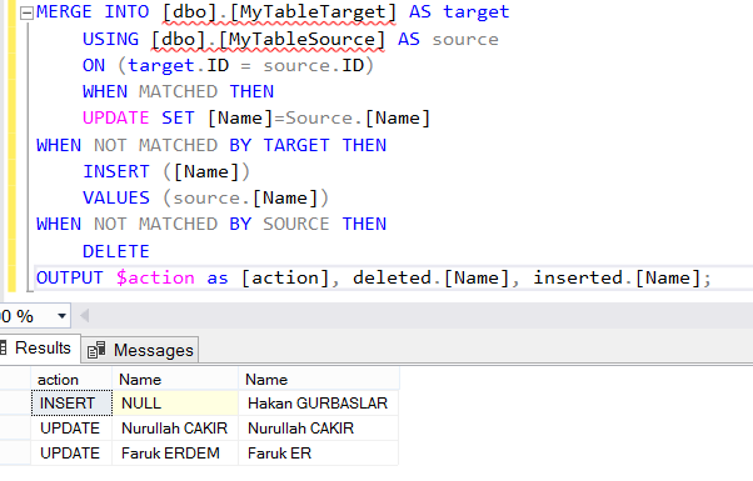Delete With Join T-Sql
Delete With Join T-Sql. The issue is that the delete statement supports two from clauses. In general, joins should only be used when you need to select or group by columns in 2 or more tables.

Delete g from ( select top(10) object_id from #gosh order by 1 desc ) x inner join #gosh g on x.object_id = g.object_id; You specify a source record set and a target table and the join condition between the two. To make it even better, the first from keyword is optional.
Code Language:sql (Structured Query Language)(Sql) Notice That You Put Table Names T1And T2Between The Deleteand From Keywords.
Example # remove products that have not sold. First, here is a simple example: The following sql statement deletes all rows in the customers table, without deleting the table:
It Can Contain Zero, One, Or Multiple Join Operations.
Second, specify the condition in the where clause to identify the rows that need to be deleted. The general syntax for the delete statement is as follows: Delete from table1 where id in (select id from table2.inner join.inner join where etc) minimize use of dml queries with joins.
Inner Join Tblclassroom B On A.classroomid = B.id Where B.teacherid = 42.
The output clause was introduced in sql server 2005. Therefore, you should always use the delete statement. Using the same concept of inner join, we can delete rows from one table based on another table using inner join.
The Need To Join Tables In Order To Determine Which Records To Delete Is A Common Requirement.
You have to use where clause with delete query to delete selected rows, otherwise all the records would be deleted. First, specify the name of the table (t1) that you want to update in the update clause. You specify a source record set and a target table and the join condition between the two.
Begin Tran Deletewinter ;With Removewinter As( Select * From Tbalmonddata Where Month(Almonddate) In (12,1,2) ) Delete From Removewinter Commit Tran Deletewinter If We Run The Wrapped Query Following The Delete, We’ll See No Records Return Since The 92 Winter Months Were Removed.
If you omit t1table, the deletestatement only deletes rows in t2table. To make it even better, the first from keyword is optional. It is with the second from clause where you can join to other tables.
Post a Comment for "Delete With Join T-Sql"